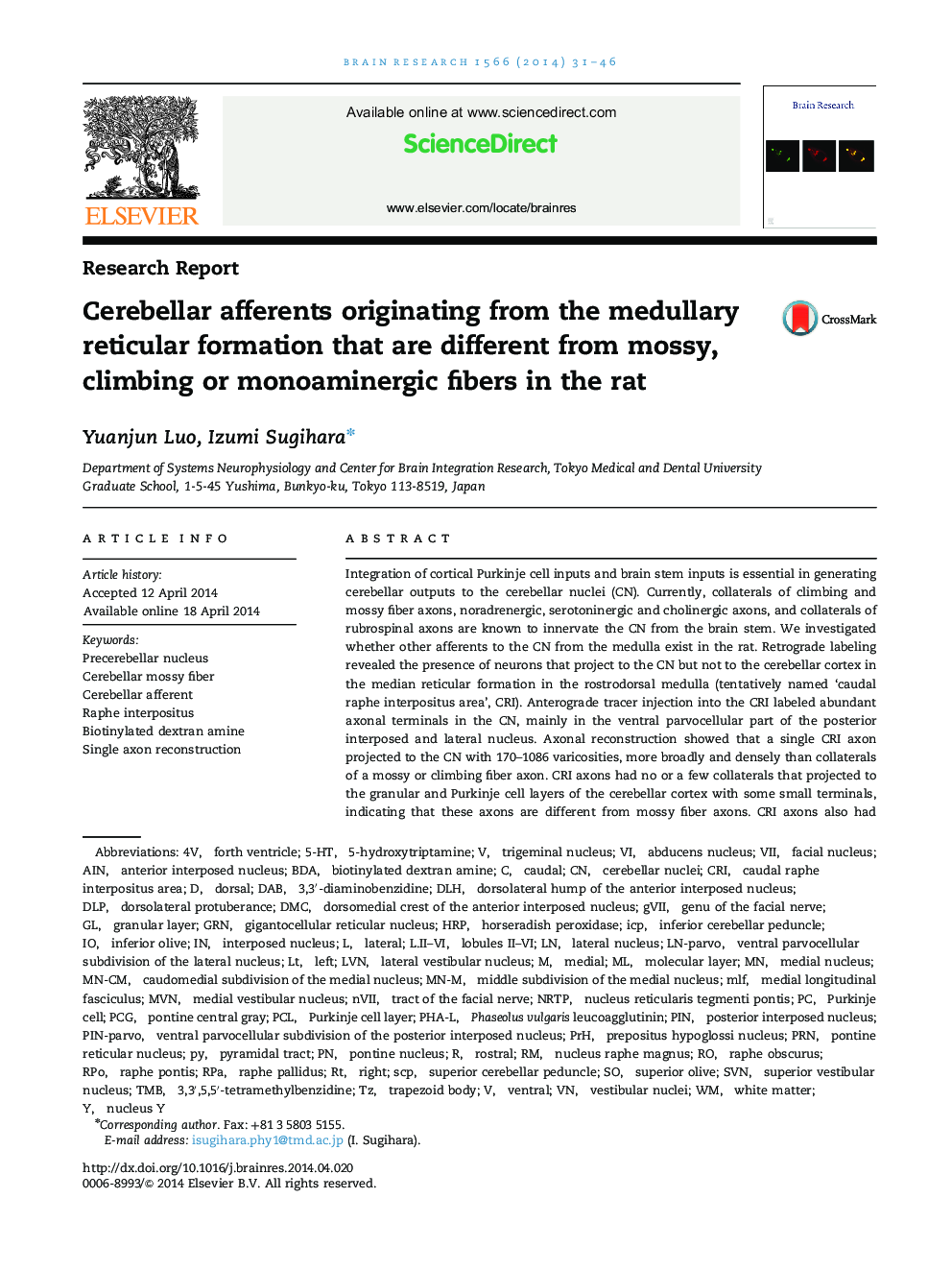| کد مقاله | کد نشریه | سال انتشار | مقاله انگلیسی | نسخه تمام متن |
|---|---|---|---|---|
| 4324339 | 1613873 | 2014 | 16 صفحه PDF | دانلود رایگان |
• We identified cerebellar afferents from the caudal raphe interpositus area (CRI).
• CRI axons projected densely to the cerebellar nuclei but only weakly to the cortex.
• They were morphologically different from mossy, climbing and monoaminergic fibers.
Integration of cortical Purkinje cell inputs and brain stem inputs is essential in generating cerebellar outputs to the cerebellar nuclei (CN). Currently, collaterals of climbing and mossy fiber axons, noradrenergic, serotoninergic and cholinergic axons, and collaterals of rubrospinal axons are known to innervate the CN from the brain stem. We investigated whether other afferents to the CN from the medulla exist in the rat. Retrograde labeling revealed the presence of neurons that project to the CN but not to the cerebellar cortex in the median reticular formation in the rostrodorsal medulla (tentatively named ‘caudal raphe interpositus area’, CRI). Anterograde tracer injection into the CRI labeled abundant axonal terminals in the CN, mainly in the ventral parvocellular part of the posterior interposed and lateral nucleus. Axonal reconstruction showed that a single CRI axon projected to the CN with 170–1086 varicosities, more broadly and densely than collaterals of a mossy or climbing fiber axon. CRI axons had no or a few collaterals that projected to the granular and Purkinje cell layers of the cerebellar cortex with some small terminals, indicating that these axons are different from mossy fiber axons. CRI axons also had collaterals that projected to the medial vestibular nucleus and an ascending branch that was not reconstructed. The location of the CRI, electron microscopic observations, and immunostaining results all indicated that CRI axons are not monoaminergic. We conclude that CRI axons form a type of afferent projection to the CN that is different from mossy, climbing or monoaminergic fibers.
Figure optionsDownload high-quality image (137 K)Download as PowerPoint slide
Journal: Brain Research - Volume 1566, 30 May 2014, Pages 31–46
